What you'll Learn
On this page
Speakers and Session Schedule
**Please note: Exact speaker times subject to changes. Check back prior to the event to confirm.**
Session 1: Innovative Technology for Digital Printing
TUESDAY OCTOBER 11
20:00 - 01:00 Tokyo / 13:00 - 18:00 Paris / 07:00- 12:00 New York
Convenor: Yoshinori Domae, iPrint Center
During the massive inkjet technology development race that has taken place from around the end of the 20th century to the present, inkjet printing technology has been extended from printing on paper to a wide variety of applications, expanding its performance and use. At the same time, there remain applications ripe for printing solutions that unfortunately have not be realized due to the inkjet technology available at the time.
In Session 1, we explore several innovative technologies that expand the possibilities for inkjet and make the previously impossible possible. In addition to discussing these advances, we consider new applications and explore the latest innovations to discover that what was unattainable in the past may now be feasible.
20:00 Tokyo / 13:00 Paris / 07:00 NY
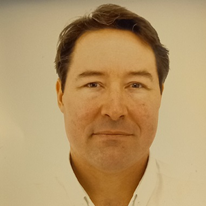
KEYNOTE: Inkjet Technology Innovation: Optimization versus Diversification, Adam Strevens, Director, i4inkjet Ltd. (Ireland)
Abstract: Inkjet technology has come a long way but arguably the most convincing years are yet to come from an industrial inkjet adoption point of view as many manufacturing sectors have much potential for conversion to inkjet yet. The talk will discuss innovation topics and examples likely to help increasing adoption in more established inkjet applications as well as those likely to further emerging applications.
After studying physics at Trinity College Dublin (200& -2014) Adam led the Device Development Group at Cambridge Display Technology Ltd. From 2014 to 2020 Adam was Lead Technology Analyst and later Strategic Marketing Manager at Xaar Plc. Adam is currently Director of i4inkjet Ltd., an inkjet technology analysis company.
21:15 Tokyo / 14:15 Paris / 08:15 NY
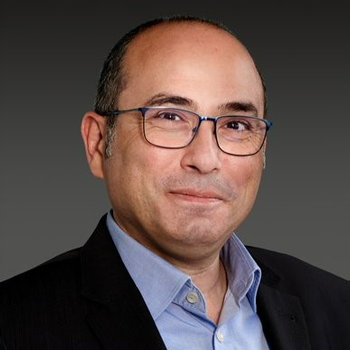
Super Piezo Inkjet Technology Extends Online Coding Capabilities, Sabri Mourad, Product Division Leader CIJ/SPI, Markem-Imaje Industries (France)
Abstract: The FMCG industry is facing a real revolution through the emerging of dynamic 2D codes and late-stage customization. These new market needs create tremendous constraints on conventional well-known Continuous Ink Jet (CIJ) coding and marking technology with a significant increase in the amount of data to be generated and printed. Markem-Imaje developed a new innovative technology to answer this challenge. The new breakthrough innovation is based on Super Piezo Inkjet technology (SPI). It moves the borders of online data coded by one order of magnitude beyond the current performances of conventional CIJ. The presentation will introduce the capabilities of this new technology and its major assets.
Sabri Mourad is the President of Markem-Imaje Industries and the Director of the Continuous Inkjet Division of the company. Sabri is a specialist in product lifecycle management with extensive experience in coding and marking technologies. He holds a PhD in mechanical sciences and a master’s degree in business administration
21:45 Tokyo / 14:45 Paris / 08:45 NY
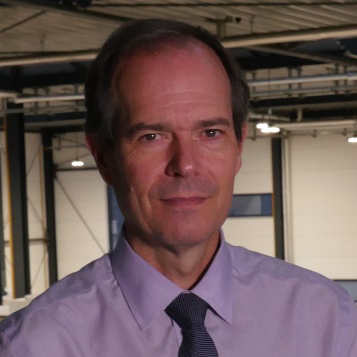
Advances on Multi-Material Ultra High Viscosity Printing with Inkjet, Ramon Borrell, CTO, Quantica GmbH (Germany)
Abstract: One year ago, at Print for Fabrication 2021, Quantica announced a novel technology for ultra high viscosity printing with inkjet. Since then, steady progress has been made in refining the technology and expanding the fields of application. A new piezoelectric actuator capable of high frequency operation has been proven and is being implemented in the first commercial printhead expected to be launched late 2023. The roadmap of printhead models using this technological platform has been confirmed, and a concept for a new technology platform with much higher nozzle density and operating frequency is starting to take shape. Quantica has also designed an advanced prototype of a fully functional 6 material 3D printer that will be publicly shown late 2022. A very large number of applications in 2D and 3D are being considered by Quantica in connection with customers and partners. In all cases the main theme is better performing products and processes taking advantage of the enhanced properties of ultra high viscosity materials.
Ramon Borrell received a MSc in Industrial Engineering (1987) and a MSc on Automotive Business (1993) from Universitat Politècnica de Catalunya in Barcelona. He held a number of technical and management positions developing large format inkjet printers at HP. In 2007 he was appointed R&D Director of Xaar plc in Cambridge, England where he led the development of the printhead portfolio including the 5601 printhead featuring Thin Film Piezo MEMS for industrial printing. In 2020 he founded borrell.uk Technology Management aimed at helping companies globally with their technical, business and strategic developments. He joined Quantica as CTO in 2021 and currently is also Treasurer of IS&T.
22:35 Tokyo / 15:35 Paris / 09:35 NY
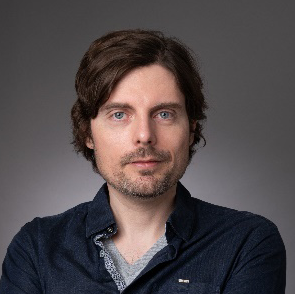
A Digital Printing Technology with the Power to Reinvent Semiconductor and Display Production, Patrick Galliker, CEO, Scrona AG (Switzerland)
Abstract: Over the last decades inkjet printing has substantially improved; for example, by adapting microfabrication technology in the production of the most recent inkjet printheads. However, further enhancement of the inkjet printhead architecture is becoming physically limited and therefore increasingly expensive. The goal of making inkjet printheads higher resolution to use them as additive manufacturing tools in printed electronics and related fields has therefore been restricted. To make inkjet printing compatible with high-resolution 3D printing, incremental innovation is insufficient; actual disruption is needed. A complete change of paradigm. Electrohydrodynamic printing, the basis of Scrona's NanoDrip printing, creates the force required to eject droplets directly inside the ink, at the nozzle exit where the force is actually needed. All problems related to creating a force inside the printhead itself and transmitting it to the nozzle exit inside a viscous medium are thereby eliminated. This leads to nothing less than the potential to increase both the printing resolution and ink viscosity more than a hundredfold.
Patrick Galliker is CEO and co-founder of the ETH spin-off company Scrona. Patrick has already raised more than 10 Million Swiss Francs in funding for Scrona, and received multiple recognitions, including a Guinness World Record for the smallest inkjet printed color image.
23:05 Tokyo / 16:05 Paris / 10:05 NY
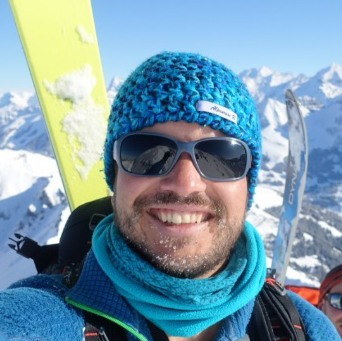
Big data for inkjet printing optimization, Raphaël Wenger, CEO, Droptimize SNC (Switzerland)
Abstract: The fine-tuning of printing parameters is a crucial task to achieve novel inkjet applications. It remains mostly carried out through time-consuming iterations by experienced specialists. Such experts are hard to come by, and the quality of the results they deliver solely depends on their competencies.
Droptimize investigates the use of big data to provide a reproducible, robust workflow for inkjet parameter optimizations. We apply modern software to conventional drop watching equipment. This unique combination allows us to automatically test hundreds of sets of printing parameters, store the resulting drop characteristics in a database, and finally compare them to identify optimums and instabilities. Having full control of the software allows us to interface most inkjet equipment and iterate not only over the waveforms but also over the temperatures, flowrates, and any other available parameter. We believe this unique approach is a first step toward the standardization of inkjet parameter tuning and could lead us all the way to fully automatized optimization in the future.
Raphaël Wenger co-founded Droptimize with Florian Bourguet as a spin-off of iPrint in 2020. They developed their idea of automatized printing optimization into a software that they now use to provide services to the inkjet industry. In parallel to this activity, Raphaël still works at iPrint as a Senior R&D Engineer.
23:55 Tokyo / 16:55 Paris / 10:55 NY
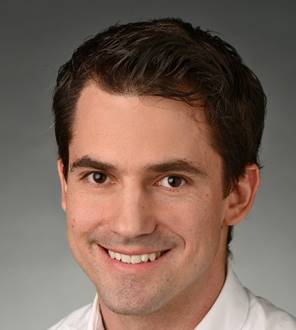
The Impact of Nozzle Sensing on Industrial Digital Printing, Florian Fässler, Head of R&D, Polytype AG (Switzerland)
Abstract: Nozzle sensing allows monitoring of the health of individual nozzles in piezo inkjet printheads in real-time. This technique has been known for many years, but until now it was not really used in industrial printing machines. This speech will give an introduction to nozzle sensing and discuss the potential this technology offers for industrial printing applications.
Florian Fässler is leading the digital technology development at Polytype, an international development and plant engineering company. Its core expertise and market leadership cover metal packaging, printing on plastic cups and tubes and digital printing technology. Since joining the company in 2010 he has been working on a broad range of industrial digital printing machines. He holds a master’s degree in mechatronics with a special focus on digital printing.
00:25 Tokyo / 17:25 Paris / 11:25 NY
Discussion with all Speakers
Session 2: Sustainability of Essential Printing – How We Sustain the Printing Necessary for Life
WEDNESDAY OCTOBER 26
13:00 - 17:30 Tokyo / 06:00 - 10:30 Paris / 00:00- 04:30 New York
Since Gutenberg's invention, there has always been a need to have certain things printed. Food and pharmaceutical packaging, apparel, and photographs are essential for our life. Even in this IT era, printing is essential to printed electronics and 3D manufacturing. At the same time, the world is increasingly concerned about resources and sustainability, which forces us to ask "How do we sustain the printing of essential items?".
This topical meeting introduces information on how printing enhances sustainability through photography and the 3D manufacturing of industrial parts and electronics, but also discusses the challenges of managing the technology and process.
WELCOME
13:00 Tokyo / 06:00 Paris / 00:00 NY
Welcome Remarks: Atsushi Tomotake, Konica Minolta, Inc. and Natsuko Minegishi, Konica Minolta, Inc.
Service Award Presentations
PART 1
Session Chairs: Takashi Fukue, Kanazawa Institute of Technology, and Kye-Si Kwon, Soonchunhyang University
13:15 Tokyo / 06:15 Paris / 00:15 NY
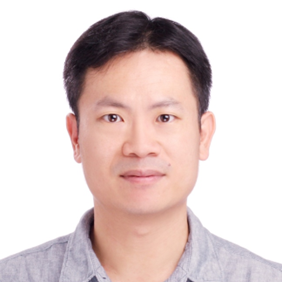
Sustainable Design and Process Integration for In Mold Electronics, Li-Wei Yao, researcher, Industrial Technology Research Institute (ITRI) (Taiwan)
Abstract: Plastic offers a high degree of design freedom and has the advantage of being light. As such, plastics have been increasingly applied in the manufacturing of automobiles and luxury home appliances, particularly in decorative and interior trims. Printed electronics enable direct printing on plastic substrates, allowing for decorative plastic designs to be combined with printed electronic circuits for human-machine interfaces that provides more interactive functionality. The in-mold integration of electronics combines plastic in-mold decoration with flush printed circuits, which, through thermoforming, integrates fashionable 3D plastic decoration with printed circuits.
This technology, known as in-mold electronic technology, can increase manufacturing productivity, reduce the space and cost required for printed circuit board assembly, reduce device weight, and greatly improve design freedom. However, the combination of 3D plastic decoration and printed circuits has a number of sustainable and integration challenges. This talk discusses material recycling, a simple assembly and replacement module with plastic and component separation method, and the design criteria of printed circuits and 3D conformal process technologies (e.g., lamination, hot pressing, and surface mounted components) necessary to achieve optimal optomechatronic and plastic integration and sustainability. The diverse applications explored promote sustainable design and production, contributing to the sustainable development of printed circuit technology.
Li-Wei Yao has worked at Industrial Technology Research Institute Electronic and Optoelectronic System Research Laboratories in Taiwan for more than 14 years. He specializes in in-mold electronics technology, 3D conformal sensor module integration, thin-film photolithography etching process, and integration technology for the foldable touch AMOLED panels.
13:40 Tokyo / 06:40 Paris / 00:40 NY
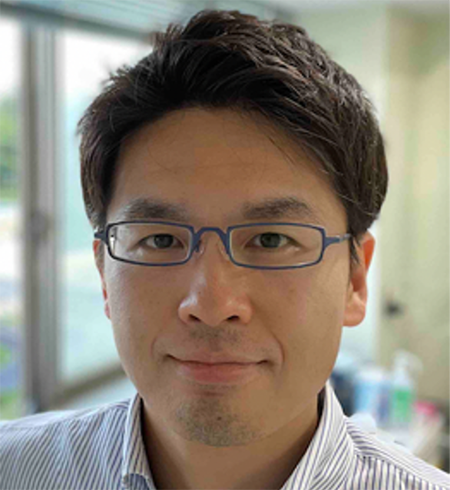
Fundamental Understanding of Paper Transport Phenomena - From the Perspective of Sustainability of Printing, Yosuke Tsukiyama, Professor, Nigata University (Japan)
Abstract: Analyzing the causes of feeding failures (overfeeds, paper jams) in the paper feeding module is important. However, most of the failures in multifunction printers are multi-factorial phenomena, and it is generally difficult to identify the causes of such malfunctions. Therefore, it is essential to elucidate the relationship between feeding characteristics and paper performance such as especially the resistance to particle drop off from paper. In this study, we developed a method to quantitatively measure the amount of powder that adheres to the surface of the rubber roller for paper feeding, and clarified the effects of the amount, the mean shape and the mean size of the powder particle on the friction of the rubber roller. Based on these findings, we have participated in the development of a roller friction method to quantitatively measure the amount of powder that drops off from the paper surface and have clarified the validity of this method. This talk our research and findings.
Yosuke Tsukiyama is an associate professor in the Institute of Science and Technology at Niigata University, where he is also a faculty member of the Department of the Mechanical Engineering. He received his BE, MS, and PhD from Nagoya University, all in Mechanical Engineering. Tsukiyama's current research interests include fundamental understanding of the friction mechanisms and friction control of metal-to-metal contact and rubber-to-paper contact. He is a recipient of Konica Minolta Research Encouraging Grant 2019 for work on the paper transport phenomena. He is an advisor to JBMIA’s Standardization Committee on paper rating.
14:05 Tokyo / 07:05 Paris / 01:05 NY
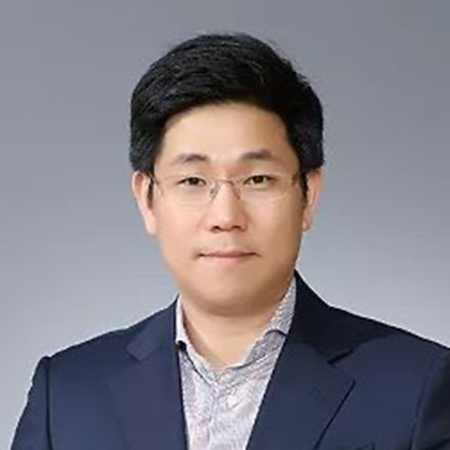
Flexible and Printed 3D Organic Integrated Circuits and Biosensors, Sungjune Jung, Professor, Pohang University of Science and Technology (Republic of Korea)
Abstract: Direct printing of thin-film transistors has enormous potential for ubiquitous and lightweight wearable electronic applications. This talk presents our recent advances in flexible and printed integrated circuits and biosensor arrays. First, A 3D integration approach is introduced to achieve technology scaling in printed transistor density, analogous to Moore’s law driven by lithography. We demonstrate the scalable 3D integration of single- and dual-gate organic transistors on plastic foil by printing with high yield, uniformity, and year-long stability. The vertical stacking of three complementary transistors enables us to propose a programmable 3D logic array as a new route to design printed flexible digital circuitry essential for emerging applications. Second, we use our robust TFT printing process to design and fabricate wearable active-matrix sensor arrays. We fabricate active-matrix TFT arrays with high yield and uniformity where array sizes can be customizable and integrated with highly sensitive piezoresistive sheets. The sensor array creates a spatiotemporal pulse wave map on the wrist and overcomes the positional inaccuracy of conventional single-point sensors. Finally, we present inkjet-printed organic voltage amplifiers by integrating active and passive electrical components on a single, highly flexible substrate for in vivo brain activity recording. We validate the conformable brain-integrated organic voltage amplifiers as electrocorticography devices in a rat in vivo model, showing their ability to record local field potentials in anaesthetized animals.
Sungjune Jung is an associate professor at Department of Materials Science and Engineering and Department of Convergence IT Engineering at Pohang University of Science and Technology (POSTECH). He received his PhD in manufacturing engineering from University of Cambridge and subsequently joined the Cavendish Laboratory at the University. Before obtaining his PhD, Jung worked for Samsung Electronics Digital Printing Division for 3 years. He has been leading the bio-printing and printed electronics laboratory since he joined POSTECH in 2013. His research focuses on 3D bioprinting and biofabrication, as well as flexible printed electronics and circuits.
PART 2
Session Chairs: Dong-Youn Shin, Pukyong National University, and Hirotoshi Terao, Alps Alpine Co. Ltd.
15:00 Tokyo / 08:00 Paris / 02:00 NY
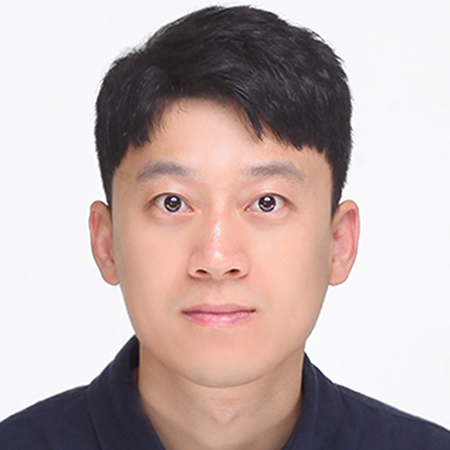
Inkjet printing process and technology issues for next-generation display, Jun-Young Kim, Professor, Gyeongsang National University (Republic of Korea)
Abstract: OLED (Organic Light Emitting Display) has been commercialized by the thermal vacuum deposition process, and Samsung's Galaxy mobile phone and LG's OLED TV are now popular with the public. However, the thermal vacuum deposition process has disadvantages such as large area, environmental issues due to complex processes, and an expensive price. In order to solve these problems, a new OLED panel process must be applied, and the inkjet printing process will be an alternative. This presentation talks about the advantages and technical issues of the inkjet printing process applied to display panels, and the direction we should think about for next-generation display.
Jun Young Kim received a BS in electrical engineering from Soongsil University, and an MS and PhD in electrical and computer engineering from Seoul National University. Following his degrees, he conducted research on soluble OLED at LG Display, then on printed electronics in KITECH (Korea Institute of Industrial Technology). Kim is currently a professor in the Department of Semiconductor Engineering at Gyeongsang National University. His research interests are inkjet printed based OLED & QD-EL (next generation display) and photovoltaic device (next generation energy source).
15:25 Tokyo / 08:25 Paris / 02:25 NY
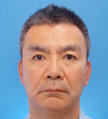
Sustainability about the Thermal Transfer Printing, Satoshi Narita, Manager, Eco-Technology Section, Technical Development Division, Imaging Communications Operations, Dai Nippon Printing Co., Ltd. (Japan)
Abstract: The global photoprint market is recovering after a major decline in 2020 associated with COVID 19 but is observed to be flat or a gradual downtrend as a major trend. From a regional perspective, significant growth can be expected in emerging countries and regions. However, as with other businesses, there is a risk of adverse effects due to resource, material, and semiconductor procurement instability related to the spread of infectious diseases and regional conflicts. Specifically, it is assumed that product supply will not meet demand and will lead to lost opportunities.
This talk discusses how Dai Nippon Printing aims to realize a sustainable and better future by addressing environmental issues through both business operations and infrastructure. DNP envisions a decarbonized and recycling-oriented society in harmony with nature by creating new value through printing and information innovation designed to achieve the emergence of a sustainable society. The “survival” of thermal transfer printing depends on the introduction of effective environmental measures explored in this talk.
Satoshi Narita is the Manager, Eco-Technology Section at Dai Nippon Printing Co., Ltd. (DNP). He received a master’s degree in engineering from Yokohama National University in1991 before joining DNP. Since then, has been engaged in the development and the manufacturing technology of thermal transfer imaging medias (Dye diffusion and Thermal transfer), the manufacturing technology of silver halide photographic paper, product safety, chemical substance management, etc., and has been in current position since 2021.
15:50 Tokyo / 08:50 Paris / 02:50 NY
.jpg)
Why Still Print Photo in Digital Era, and China Photo Market Intro, Sean Cui (YuXuan), Founder and CEO, Hannto Technology Company (China)
Abstract: In the digital era, especially one that is mobile dominant, digital photos have consecutively grown to the trillion scale every year. People capture and share photos on their mobile devices so easily, so why should we still print photos? This talk examines the essence of a photo and how a printed photo fits into that essence; solutions of photo printing and how they serve customer needs; who need to print photos and what product/services they want; how to attract the younger generation and secure the future of photos; and the projection of the market scale in future?
During 13 years at Hewlett-Packard, Sean Cui worked in number of technical areas, from supply chain to R&D and from product planning to business development. In 2017, Cui and his team established Hannto Technology Company, focused on providing next generation printing solutions for home and business customers in China. They utilized global technology and supply chains to create and deliver unique valued products/services, which—in five years—has grown to a scale of $100M+ in revenue with 2M+ in units. Cui has a balanced view of international business principals and deep Chinese cultural understanding.
PART 3
Session Chair: Atsushi Tomotake, Konica Minolta, Inc.
16:45 Tokyo / 09:45 Paris / 03:45 NY
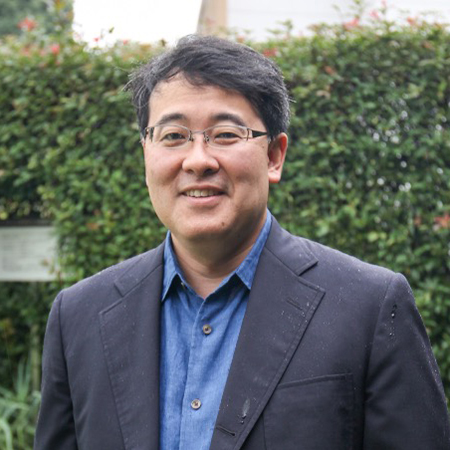
KEYNOTE: Eliminate the idea of Waste, Eric Kawabata, Asia Pacific Regional Manager, TerraCycle (US)
Abstract: In Japan, 9.4 million tons of plastic are disposed of annually. Per capita, this figure is 37 kg, said to be the second highest in the world. The world is urgently addressing the problem of single-use plastics. At TerraCycle, our mission is Eliminating the Idea of Waste®. Businesses, government entities, and people like you work with us globally to keep trash out of landfills or from incineration. Through collaboration and innovation, we've developed the world's first solutions in everything from recycling to reuse.
Eric Kawabata has worked in sustainability for 10 years, starting as a volunteer in 2008 with Carbon Fee Consulting in Japan. He co-founded a non-profit project, Ocean Green Association, in 2009, to study means to lower coastal water temperatures after seeing the impact on coastal ecology and bleaching of coral reefs in Japan.
Starting work with TerraCycle in 2013, he officially launched the company in Asia starting in Japan in January 2014 and subsequently became Asia Pacific Regional Manager in 2016. He opened TerraCycle in China in the Fall of 2016 and Korea the following year, where they currently operate oral care, hair care, air care and other recycling programs. Previously, he did 3 years of post-graduate work at the University of Tokyo Graduate School of Law and Politics, as Legal Counsel for Morgan Stanley and Deutsche Bank, and as an investment banker for a decade
Session 3: Green End of Printing
WEDNESDAY OCTOBER 26
18:00 - 00:00 Tokyo / 11:00 - 17:00 Paris / 05:00 - 11:00 New York
Convenor: Kilian Menzel, HTWK - Leipzig University
As a quantifiable and comprehensible method, Life Cycle Assessment seems to be a legitimate tool for identifying and comparing the environmental impacts of printing. In the session “The Environmental Impact of Printing”, we discuss how are this tool is applied and the challenges of assessing parameters and preparing LCAs in the printing industry. With speakers from different sectors—decor printing, inkjet technology, additive manufacturing, sustainability consulting—we offer the opportunity for a professional and in-depth exchange around the growing field of sustainability within the printing sector.
18:00 Tokyo / 11:00 Paris / 05:00 NY
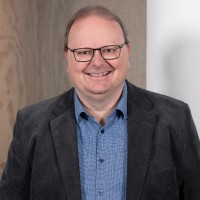
KEYNOTE: Ecological Challenges of Décor Printing, Robert David, head of environment and coordinator of risk management, Interprint GmbH (Germany)
Abstract: Décor printing for the furniture and flooring industry is facing more and more ecological challenges. Formaldehyde release from finished products must be dropped. Moreover, in its printing we see several ecological aspects starting with the paper and its carbon footprint to gravure cylinders with their chrome-plated surfaces and ending in high-energy consumption of drying water-based inks. One way to reduce the ecological footprint can be digital printing.
Robert David holds a PhD in physics from the University of Bielefeld. He worked for the publication printer DD+V in Dresden, before joining the décor printer Interprint in 2001. His responsibilities cover research & development, environment, energy management, and incident prevention. David is chairman of ERA Environment, Health & Safety commission.
19:30 Tokyo / 12:30 Paris / 06:30 NY
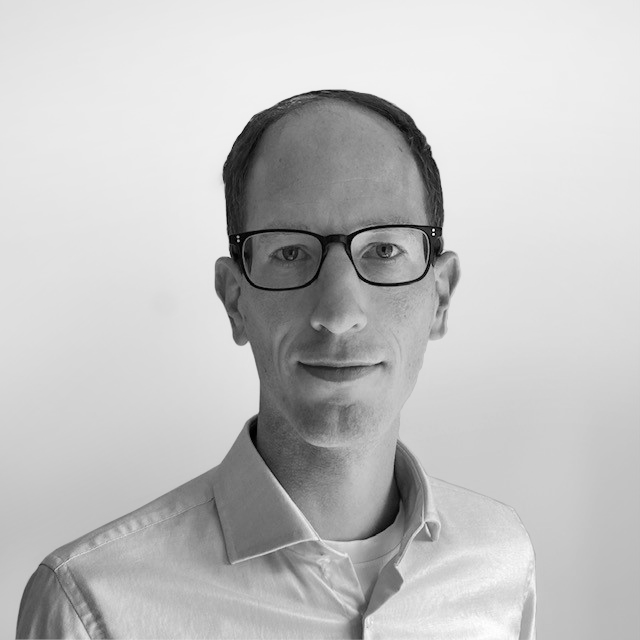
The Sustainability Benefits of Xaar’s Ultra High Viscosity Technology, Renzo Trip, XAAR
Inkjet, a technology for the controlled deposition of fluid, is an inherently sustainable process. The advantages of digital printing are well-known: removing waste during the pre-press procedure, eliminating ink waste, and reducing waste of inventory thanks to the economic viability of short runs. Further advantages are seen in specific applications, e.g., eliminating the need for labeling in direct-to-product applications.
The ultra high viscosity capability of Xaar printheads enables a further reduction of the environmental impact of digital printing. For example, an increased fluid viscosity allows for a lower solvent content, reducing the energy required for drying. In addition, the (Ultra) high viscosity capability has opened up new industries to inkjet, whereby sustainability is a key argument. The automotive industry, for example, is considering inkjet as an alternative to spray painting. Besides highlighting inkjet’s strong sustainability credentials across an increasingly wide set of industries and applications, a much asked question will be addressed: how can Xaar’s printheads reliably jet ultra high viscosities?
Renzo Trip obtained a MSc in applied physics from Delft University of Technology in the Netherlands, followed by a PhD in engineering mechanics from KTH Royal Institute of Technology in Sweden, after which he joined Xaar plc (Stockholm, Sweden) as part of the Advanced Applications and Technology group.
19:50 Tokyo / 12:50 Paris / 06:50 NY
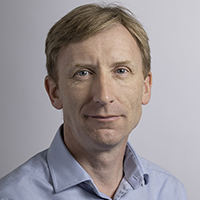
The Carbon Footprint of Industrial Inkjet, Clive Ayling, managing director, Meteor Inkjet Ltd
Meteor Inkjet provides electronics, software, tools, and services to the inkjet industry and is not active in the environmental lobby or marketplace. However, every company should have an interest in sustainability and, using Meteor’s own CO2 analysis and reduction actions as an example, this talk presents some thoughts on what every company should be doing, the carbon footprint of the inkjet process, the impact of the industry on the environment as a whole, and why the planet should be glad that industrial inkjet printing exists.
Clive Ayling is a recognized veteran in the industrial inkjet industry having spent more than 20 years leading the development and delivery of a wide variety of digital printing implementations. In 2005, he co-founded TTP Meteor, now Meteor Inkjet Ltd, and became managing director in 2016 upon Meteor’s acquisition by Global Graphics plc, now Hybrid Software Group PLC. Prior to Meteor Inkjet, Clive spent much of his career as a consultant with The Technology Partnership and before this as an R&D engineer for Schlumberger Industries. He has a degree in physics from Cambridge University.
21:00 Tokyo / 14:00 Paris / 08:00 NY
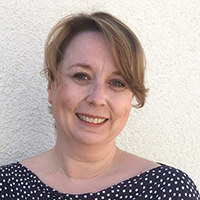
Sustainable Packaging Printing!? and (sometimes) the Gap Between Wish and Reality, Anke Frieser-Tausch, deputy manager, DFTA Technology Center (Germany)
Along the value chain from the raw printing plate until the final print result there are many current approaches to bring more environmental awareness and sustainability to the process. The huge challenge here is a smooth transition without the loss of efficiency.
This talk provides insights into current attempts and alternative routes to address these challenges in the flexographic printing processes and how DFTA as an association can be a platform for these topics.
Anke Frieser-Tausch is the deputy manager at DFTA Technology Center, where she engages with technical research, development, and education for the flexographic industry. She has more than 30 years of industry experience and has been working for DFTA since 2018. Previously she held multiple positions providing technical support at customer sites, involving product development, and managing projects. Her expertise helps DFTA tackle packaging industry challenges and support future development for flexography.
21:20 Tokyo / 14:20 Paris / 08:20 NY
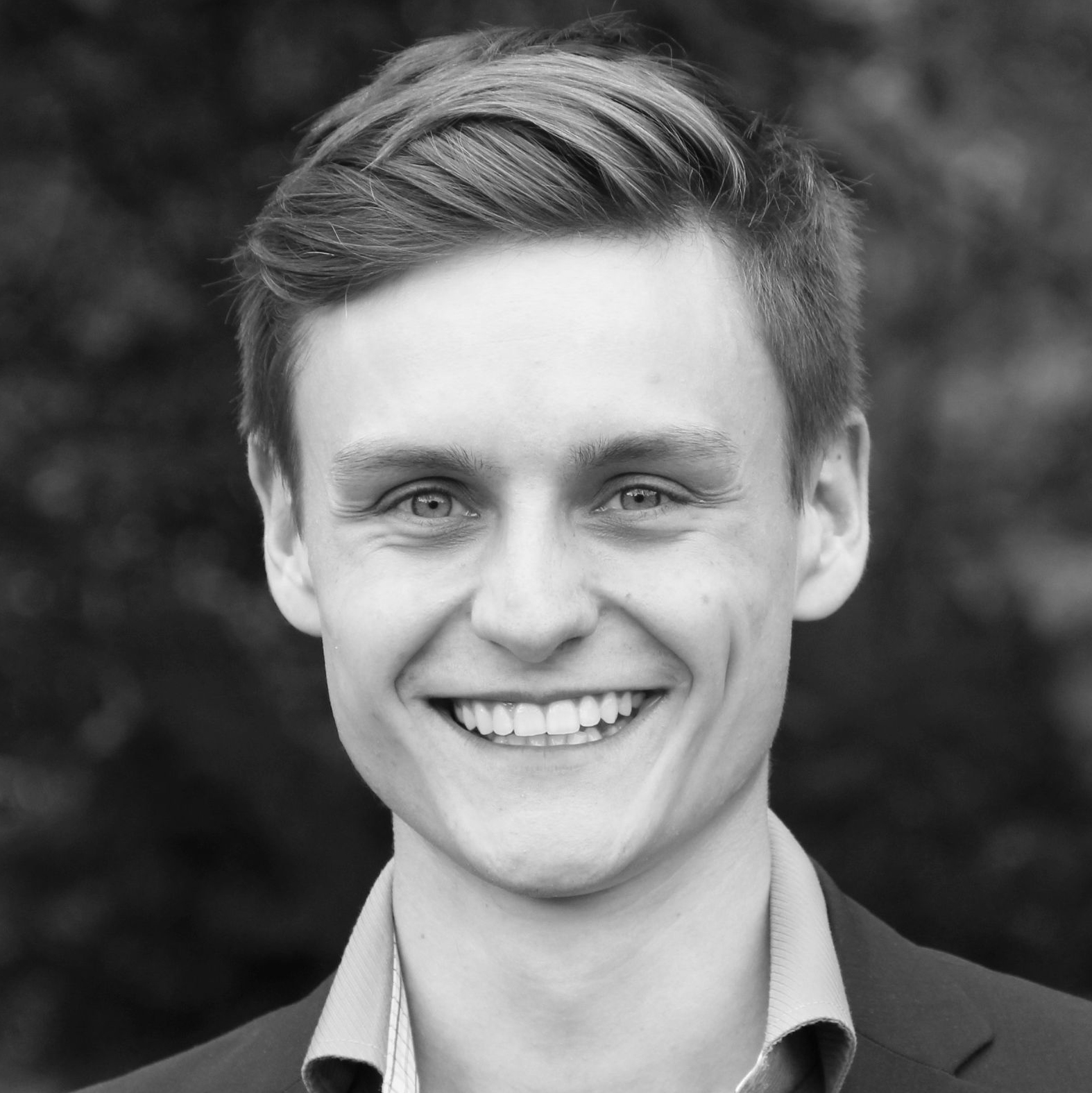
Printing “Green” Electronics from Functional Materials—Vision and Reality,
Tobias Prenzel, Fraunhofer IBP and University of Stuttgart (Germany)
Printing highly specialized materials for electronic functionality is a quickly emerging technology. Replacing conventional subtractive processes in the electronics industry with additive technologies seems attractive as it is expected to reduce energy consumption and waste generation, as well as the amount of hazardous chemicals used for etching. To understand how realistic a vision of “green printed electronics” is, this talk discusses the current state of sustainability evaluation in the field. In particular, findings of several conducted life cycle assessment (LCA) studies on printed electronics are summarized, covering the entire value chain from raw materials to the end of life of electronic devices.
Tobias Prenzel, is a project manager in the Department Life Cycle Engineering (GaBi) at Fraunhofer IBP and a research scientist at University of Stuttgart. He is an environmental engineer by training and currently coordinates sustainability assessment projects on highly specialized materials and product systems. Prenzel’s key focus lies on life cycle assessment (LCA) and the integration of data science approaches for scalability and automation. Since 2017 he has been involved in EU-funded public research projects dealing with functional materials and technologies for printed electronics.
21:40 Tokyo / 14:40 Paris / 08:40 NY
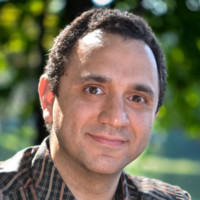 Sustainability Performance Evaluation of Metal Additive Manufacturing for a Microscale Chemical Reactor, Kamyar Raoufi, Sharif University of Technology (Iran)
Sustainability Performance Evaluation of Metal Additive Manufacturing for a Microscale Chemical Reactor, Kamyar Raoufi, Sharif University of Technology (Iran)
Abstract: Metal additive manufacturing processes such as laser powder bed fusion (LPBF) and binder jetting (BJ), as well as a conventional powder metallurgy manufacturing processes(e.g. metal injection molding or MIM) are capable of making microscale chemical devices. These devices increase surface-to-volume ratios in comparison to conventional batch chemical production methods and provide a platform to intensify energy and mass transfer. As a result, modular chemical process intensification can reduce process steps and increase productivity, which reduces device sizes, facility footprint, production and feedstock procurement costs, and energy use and emissions. While a number of production routes have been explored from a technical and cost perspective, the broader sustainability performance of these technologies is not well-understood. The objective of this research is to investigate the relative economic and environmental performance of the three manufacturing processes noted above for fabricating stainless steel micro chemical reactor components used in dimethyl ether production.
The manufacturing process design (MPD) and life cycle assessment (LCA) methodologies are applied to quantify the cost and environmental impacts, respectively. It is found that MIM has better economic performance than the LPBF and BJ additive manufacturing processes across a range of annual production volumes. However, due to consumables use in two process steps, MIM has greater environmental impacts than LPBF and BJ at low production volumes. At higher production volumes, however, the environmental impacts of consumables are amortized across more products, reducing environmental impacts significantly. The main environmental drivers for BJ and LPBF are raw materials and utilities, which are not sensitive to annual production volume. Since this research is case-oriented, future studies should investigate the effect of materials, part size, and geometry on sustainability performance of various conventional and additive manufacturing processes across a range of production volumes. In addition, the production location and supply chain configuration can affect economic and environmental performance in the production, delivery, and use of chemical processing and other technologies.
Kamyar Raoufi is a post-doctoral fellow in the Department of Industrial Engineering at Sharif University of Technology in Tehran, and holds a research position with the Iran National Elites Foundation. His research is focused on sustainable life cycle engineering, sustainable manufacturing processes and systems, sustainable logictics/supply chains, sustainable energy systems, and mathematical modeling and optimization. He received his PhD in industrial engineering from Oregon State University. His doctoral research was conducted as part of a multi-university research project funded by the US National Science Foundation (NSF), and as part of that program, Raoufi was an NSF INTERN at EarthShift Global, LLC, a sustainability consultancy in Maine. In addition, he led research under an OSU-HP research seed fund project to characterize the sustainability performance of competing conventional and additive manufacturing processes. His research accomplishments qualified him for the 2019-2020 Outstanding GRA Award from the OSU College of Engineering. He received his BSc and MSc industrial engineering from Khaje Nasir Toosi University of Technology (KNTU) and Iran University of Science and Technology (IUST), respectively.
22:30 Tokyo / 15:30 Paris / 09:30 NY
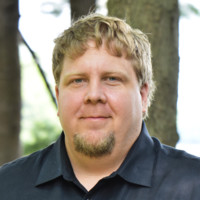
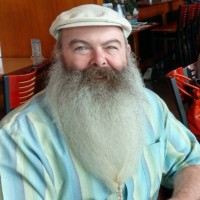
Tutorial: An Introduction to LCA and its Application to Printing, Nathan Ayer and Tom Etheridge, EarthShift Global (Canada and US)
Life Cycle Assessment (LCA) is an environmental management tool that is playing an increasingly important role in driving product and technology innovation across a wide spectrum of industries. The LCA methods are standardized in the ISO 14000 series of environmental management standards, and LCA is being used internationally to develop data about the environmental impacts of products and technologies, and to identify opportunities to improve their environmental performance.
During this tutorial, Tom Etheridge and Nathan Ayer from EarthShift Global introduce LCA, explain how it is done, and discuss the practical application of LCA in the commercial printing sector. This includes examples of key findings from LCA research on different types of printing systems, such as packaging applications and 3-D printing, as well as discussion of the key insights that LCA research has revealed about commercial printing systems and how they can be leveraged to reduce environmental impacts throughout the printing life cycle. Attendees will leave this session with a better understanding of how LCA works, how to interpret the results of an LCA, and how to apply life cycle thinking to make commercial printing systems more environmentally sustainable.
Dr. Nathan Ayer is an ACLCA-accredited Life Cycle Assessment Certified Professional and has been working as a senior LCA analyst for Canadian and US clients since 2009. A senior sustainability advisor, he leads EarthShift Global’s consulting services by conducting LCAs, chairing ISO critical reviews, developing and delivering LCA training courses, and contributing to software development.
Senior sustainability advisor Dr. Tom Etheridge is an expert in the application of life cycle assessment and carbon footprint analysis in support of business strategies, corporate sustainability, and sustainability reporting. He had a 25-year career at HP, Inc. during which, for the last 10 years, he served as worldwide life cycle assessment and carbon footprint program manager.
Supplemental On Demand Short Courses
Expand your knowledge by registering for any or all of the following On Demand short courses, recorded at Printing for Fabrication 2020. Downloadable the course notes provided. View the recordings as often as you like until 31 December 2022. See the Attend tab for fees.
SC01 Inkjet Fluid Dynamics and Fundamentals - Part 1: Acoustics of Piezo Print Heads: The Physics of Drop Ejection Instructor: J. Frits Dijksman, University of Twente Length: 2 hours
SC02 Inkjet Fluid Dynamics and Fundamentals - Part 2: Droplet Formation and Droplet Impact Instructor: J. Frits Dijksman, University of Twente Length: 2 hours
SC08 An Introduction to Digital Fabrication and Additive Manufacturing: Methods, Materials, and Applications Instructor: James W. Stasiak, HP Labs Length: 2 hours
SC10 Direct-to-Object Printing Instructor: Paul McConville, Xerox Corp. Length: 2 hours